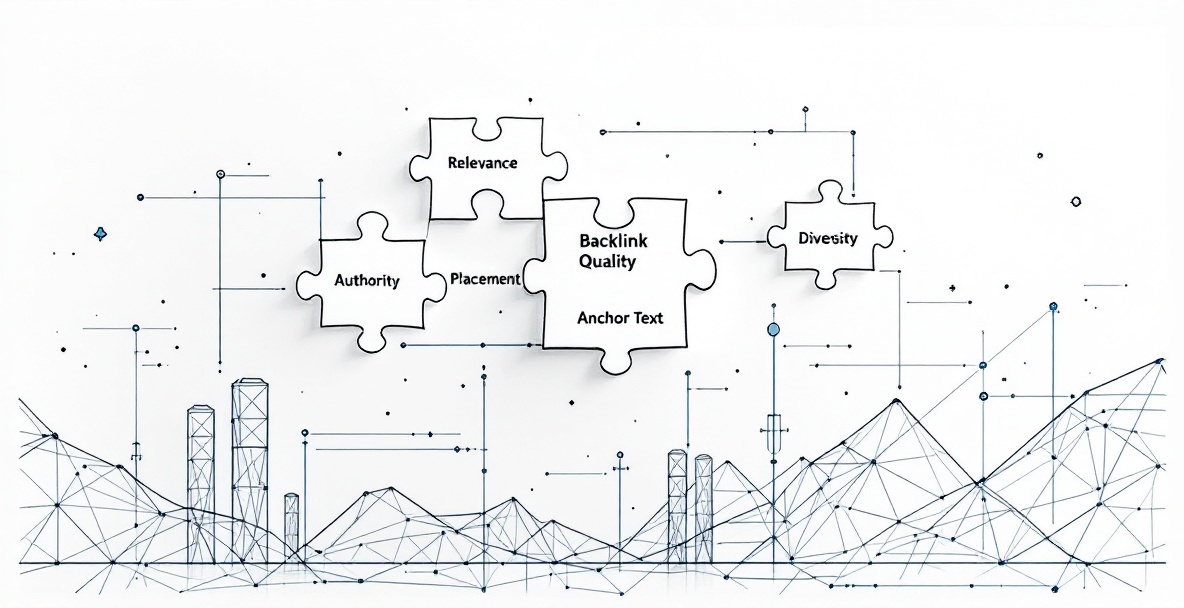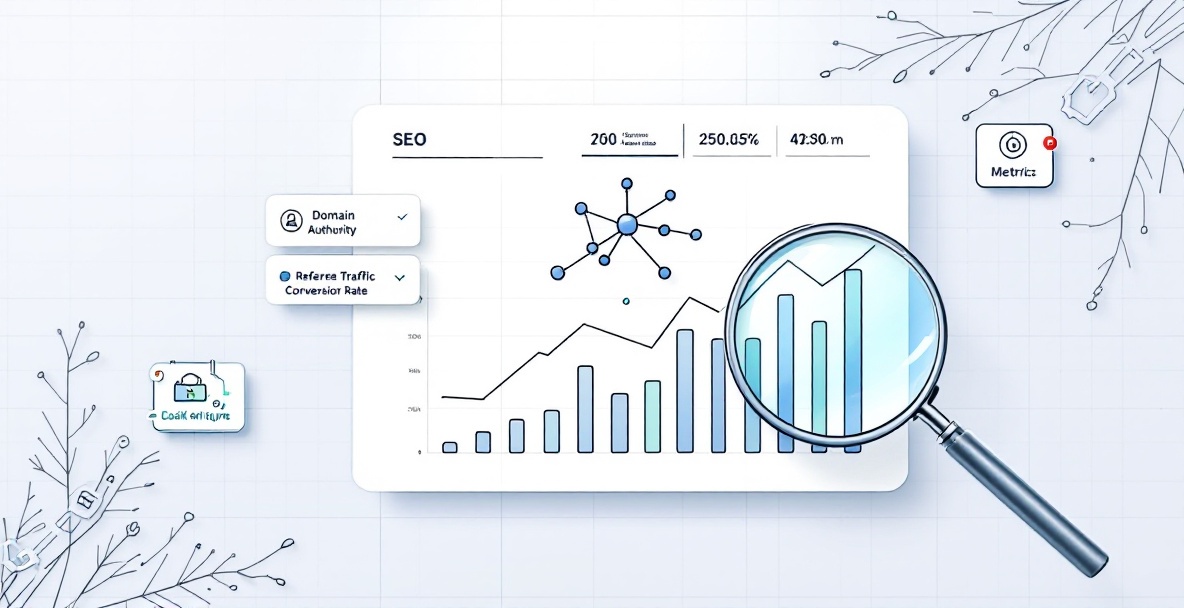In the competitive realm of search engine optimization, few strategies remain as consistently powerful yet widely misunderstood as backlink building. While many SEO practitioners continue chasing high backlink counts, the reality has shifted dramatically: search engines now prioritize quality connections over sheer numbers. This fundamental change requires a strategic recalibration for anyone serious about sustainable organic growth.
Understanding the Evolution of Link Building in SEO

The backlink landscape has undergone a remarkable transformation since Google first introduced PageRank. What began as a straightforward metric where more links equaled better rankings has evolved into a sophisticated system that evaluates numerous quality indicators. This evolution reflects search engines' commitment to delivering genuinely valuable content to users rather than rewarding manipulation tactics.
The Problem with Traditional Link Building
Traditional link building approaches often prioritized volume over relevance, leading to problematic practices that search engines have systematically devalued. Mass directory submissions, comment spam, purchased links, and private blog networks once delivered short-term ranking boosts but now typically trigger penalties or, at minimum, provide negligible value.
These outdated tactics share a common flaw: they attempt to game the system rather than earn legitimate endorsements. As Google's algorithms have grown more sophisticated, particularly following the Penguin update series, such manipulative approaches have become increasingly ineffective and potentially harmful.
The fallout from algorithmic penalties can be severe, with some websites requiring months or even years to recover their rankings. Even when penalties don't occur, low-quality links rarely contribute meaningful ranking improvements, essentially wasting resources that could be better allocated to more effective strategies.
Modern Link Quality Indicators
Today's search engines employ advanced machine learning algorithms to evaluate link quality through multiple dimensions. Relevance has become paramount – links from topically related websites carry substantially more weight than random connections. For instance, a backlink to a financial advisory service from a respected economic publication delivers significantly more value than dozens of irrelevant forum links.
User engagement metrics surrounding links have also gained importance. Search engines can now assess whether users actually follow links and find them valuable, making genuine user interaction a critical quality signal. Additionally, the natural growth pattern of a site's link profile serves as a quality indicator, with sudden spikes in identical backlinks often triggering algorithmic flags.
The most powerful backlinks now combine topical relevance, editorial discretion, and natural user engagement patterns. As SEO Tuts explores in their technical SEO audit checklist, search engines have become remarkably adept at distinguishing earned editorial backlinks from manufactured ones, making authentic relationship building increasingly valuable.
Essential Components of High-Quality Backlinks

Understanding what constitutes a quality backlink requires examining several critical dimensions that search engines evaluate when assessing link value. These factors work in concert to determine how much authority and relevance a backlink transfers to your website.
Domain Authority and Relevance
The authority of the linking domain significantly impacts backlink value. Links from established, trusted websites with strong domain authority metrics generate substantially more ranking power than those from new or low-authority sites. Tools like Moz Domain Authority, Ahrefs Domain Rating, and Semrush Authority Score provide useful approximations of this concept, though none perfectly replicate Google's internal metrics.
Topical relevance between the linking and linked sites represents another crucial factor. A backlink from a website in your industry or niche carries greater weight because it signals to search engines that subject matter experts recognize your content's value. This relevance extends beyond domain-level to page-level considerations – links from pages discussing topics closely related to your content deliver enhanced value.
The link neighborhood surrounding a potential backlink source also matters. Sites linking to low-quality or penalized websites may pass less value or even negative signals through their outbound links. Conversely, websites with selective linking practices that predominantly connect to authoritative sources tend to pass more significant ranking benefits.
Content Context and Placement
The context surrounding a backlink substantially impacts its value. Links appearing within the main content area typically transfer more authority than those in sidebars, footers, or comment sections. Search engines assign higher importance to links that appear naturally within relevant content rather than those grouped with unrelated outbound links.
Editorial endorsement represents perhaps the strongest quality signal. When a site owner or content creator manually includes your link because they genuinely find it valuable, search engines recognize this as a meaningful vote of confidence. These editorially given links substantially outperform automatically generated or algorithmically placed links.
The anchor text used in backlinks also influences their effectiveness. While exact-match anchor text (using your target keyword precisely) once provided strong ranking signals, over-optimization now risks penalties. Natural anchor text variation that includes branded terms, naked URLs, partial matches, and contextual phrases presents a healthier profile that search engines reward.
Technical Considerations
Several technical factors affect backlink quality and value transfer. The link attribute applied to backlinks – whether they're followed, nofollowed, sponsored, or UGC (user-generated content) – determines how search engines treat them. While followed links pass the most direct ranking value, other attribute types still provide brand exposure and potential traffic benefits.
Link placement within the HTML structure matters as well. Links appearing early in the HTML code typically receive more weight than those appearing later, as they suggest higher editorial priority. This technical consideration explains why content-embedded links generally outperform footer links even when both appear similar to users.
The overall number of outbound links on the linking page affects value distribution. When a page links to numerous external sites, each link receives a smaller portion of the page's authority. Links from pages with focused outbound linking patterns therefore typically transfer more value than those from pages containing dozens of external links.
Strategic Approaches to Earning Quality Backlinks

Moving beyond understanding what makes a quality backlink, successful implementation requires strategic approaches that align with current search engine priorities and user behaviors. These strategies focus on earning rather than building links through value creation and relationship development.
Content-Driven Link Building
Creating exceptional, link-worthy content forms the foundation of modern backlink acquisition. Resources that provide unique value through original research, comprehensive guides, or innovative perspectives naturally attract links as other content creators reference your work. The key lies in developing content that solves specific problems for your target audience while offering something not readily available elsewhere.
Data-driven content presents particularly strong link-earning potential. Original surveys, industry analysis, and competitive research often generate substantial backlinks as others cite your findings. For example, a comprehensive study on conversion rate optimization tactics would likely attract links from marketing blogs, industry publications, and business websites seeking to support their own content with credible data.
Visual assets including infographics, diagrams, and interactive tools also drive backlink acquisition by making complex information easily digestible. When these assets help explain challenging concepts, they frequently earn embeds and references across various websites, especially when offered with proper attribution instructions.
As SEO Tuts details in their content creation strategy template resources, successful content-driven link building requires thorough understanding of your audience's information needs and content gaps within your industry. This strategic approach produces assets that naturally attract links rather than requiring aggressive outreach.
Digital PR and Outreach
Proactive relationship building with influencers, journalists, and industry publications remains essential for acquiring high-value backlinks. Effective digital PR starts with identifying relevant content creators and understanding their audience before making contact. This research ensures your outreach addresses their specific needs rather than presenting generic pitches.
Personalized outreach that demonstrates genuine familiarity with the recipient's work significantly outperforms mass email campaigns. When approaching potential link partners, focus on establishing mutual value rather than immediately requesting links. Building relationships before making requests leads to higher success rates and more sustainable partnership opportunities.
Resource page link building represents another effective outreach strategy. By identifying websites maintaining curated resource lists related to your industry, then suggesting your relevant content as an addition, you can secure valuable backlinks from topically aligned pages. This approach succeeds because it helps resource curators improve their offerings while providing you with contextually relevant links.
Local SEO Link Building
For businesses serving specific geographic areas, local link building delivers particularly strong ranking benefits. Connections from community organizations, local business associations, and regional publications carry enhanced relevance signals for location-specific searches.
Participation in local events, sponsorships, and community initiatives often generates valuable backlinks while simultaneously building brand recognition. When documenting these activities on your website, you create linkable assets that local news outlets and community websites frequently reference.
Business listings and citations, while not always providing followed links, contribute to local search ranking through consistent NAP (Name, Address, Phone) information across the web. Maintaining accurate business information across local directories supports both direct traffic and search visibility, particularly for location-based queries.
Measuring and Optimizing Backlink Performance

Effective backlink strategies require ongoing measurement and refinement. By tracking key performance indicators and comparing results against competitors, you can continuously improve your approach and maximize return on investment.
Key Performance Indicators
Referral traffic represents one of the most immediate indicators of backlink quality. Links that drive actual visitors to your website demonstrate real-world value beyond abstract SEO benefits. Monitoring which backlinks generate meaningful traffic helps prioritize similar opportunities in the future and identifies which types of content attract engaged visitors.
Ranking improvements for target keywords provide another crucial metric. When tracking keyword positions over time, pay particular attention to correlations between new backlinks and ranking changes. This analysis helps identify which link sources and types deliver the strongest ranking benefits for your specific website and industry.
Conversion rates from backlink traffic offer insights into the business impact of your link building efforts. When visitors from certain backlinks complete desired actions at higher rates, those sources warrant additional investment. This performance-based approach ensures your link acquisition strategy aligns with broader business objectives beyond visibility alone.
Competitive Analysis
Examining competitor backlink profiles helps identify valuable link opportunities and industry-specific patterns. By analyzing which sources link to multiple competitors but not to you, you can discover potential outreach targets with demonstrated interest in your industry. These gap analysis exercises often reveal the most accessible high-value opportunities.
Assessing the content types that attract links within your industry provides strategic guidance for content creation. When certain content formats consistently earn backlinks across multiple competitors, developing your enhanced version of similar assets often yields positive results. This approach builds upon proven link-earning formats while adding your unique expertise.
Tracking changes in competitor link profiles over time reveals evolving industry trends and emerging opportunities. When competitors suddenly gain links from new sources, investigating these developments can uncover valuable partnerships, publication opportunities, or content approaches worth exploring for your own website.
Ongoing Optimization
Regular backlink audits help maintain a healthy link profile by identifying potentially harmful connections. As search algorithms evolve, previously acceptable link sources may become problematic. Proactive disavowal of low-quality links protects your website from potential penalties while maintaining the strength of your overall profile.
Refreshing and updating your most-linked content preserves and enhances its value over time. When pages that have earned substantial backlinks receive regular updates with current information, they continue attracting new links while retaining existing ones. This maintenance approach generates ongoing returns from your most successful assets.
Refining outreach strategies based on success rates improves efficiency and results. By tracking which outreach approaches, messaging styles, and relationship-building techniques yield the highest response and link acquisition rates, you can continuously improve your processes and focus resources on the most productive methods.
Next Steps and Implementation Guide
Transitioning from theory to implementation requires a structured approach that aligns your link building efforts with broader SEO and business objectives. The following framework provides a practical roadmap for developing and executing an effective backlink strategy.
Action Plan Development
Begin by conducting a comprehensive audit of your current backlink profile to establish a baseline and identify strengths and weaknesses. This audit should analyze domain diversity, topical relevance, link attributes, and potential quality concerns to guide your strategy development. SEO Tuts offers detailed technical SEO audit checklist resources that can help structure this assessment.
Next, establish clear, measurable goals for your link building program that align with business objectives. Whether focusing on ranking improvements for specific keywords, increased referral traffic, or enhanced domain authority, defining concrete targets enables proper performance tracking and resource allocation.
Develop a content roadmap specifically designed to earn relevant backlinks. This plan should include original research, comprehensive guides, and visual assets targeting specific linking opportunities you've identified. The content creation strategy template available through SEO Tuts provides a structured framework for developing these assets.
Finally, create a prioritized outreach list based on potential value and acquisition probability. By scoring potential link sources according to domain authority, relevance, and estimated outreach success rates, you can focus initial efforts on opportunities offering the highest return on investment.
Resource Allocation
Determine appropriate budget and time commitments based on competitive analysis and opportunity assessment. Link building represents a long-term investment that typically requires consistent effort over months rather than immediate results. Setting realistic timelines and resource allocations prevents premature strategy abandonment.
Consider whether to develop internal capabilities or partner with specialists. While managing link building in-house provides greater control and institutional knowledge development, working with experienced specialists often delivers faster results and access to established relationships. The optimal approach depends on your team's existing capabilities, available resources, and timeline requirements.
Establish a regular review process to evaluate performance and refine strategies. Quarterly assessments comparing results against established goals help identify which approaches generate the strongest returns and which require adjustment. This ongoing optimization ensures your link building program continuously improves in effectiveness and efficiency.
Quality backlinks represent one of the most powerful yet challenging aspects of search engine optimization. By focusing on relevance, authority, and genuine value creation rather than arbitrary quantity metrics, you can develop a sustainable link profile that drives long-term organic growth and competitive advantage.
Ready to transform your backlink strategy from quantity-focused to quality-driven? SEO Tuts offers comprehensive resources to guide your approach, from technical audit frameworks to content creation templates specifically designed for link acquisition. Visit today to access expert guidance on building a backlink profile that truly matters for your search performance.
Leave a Reply